hombre malo

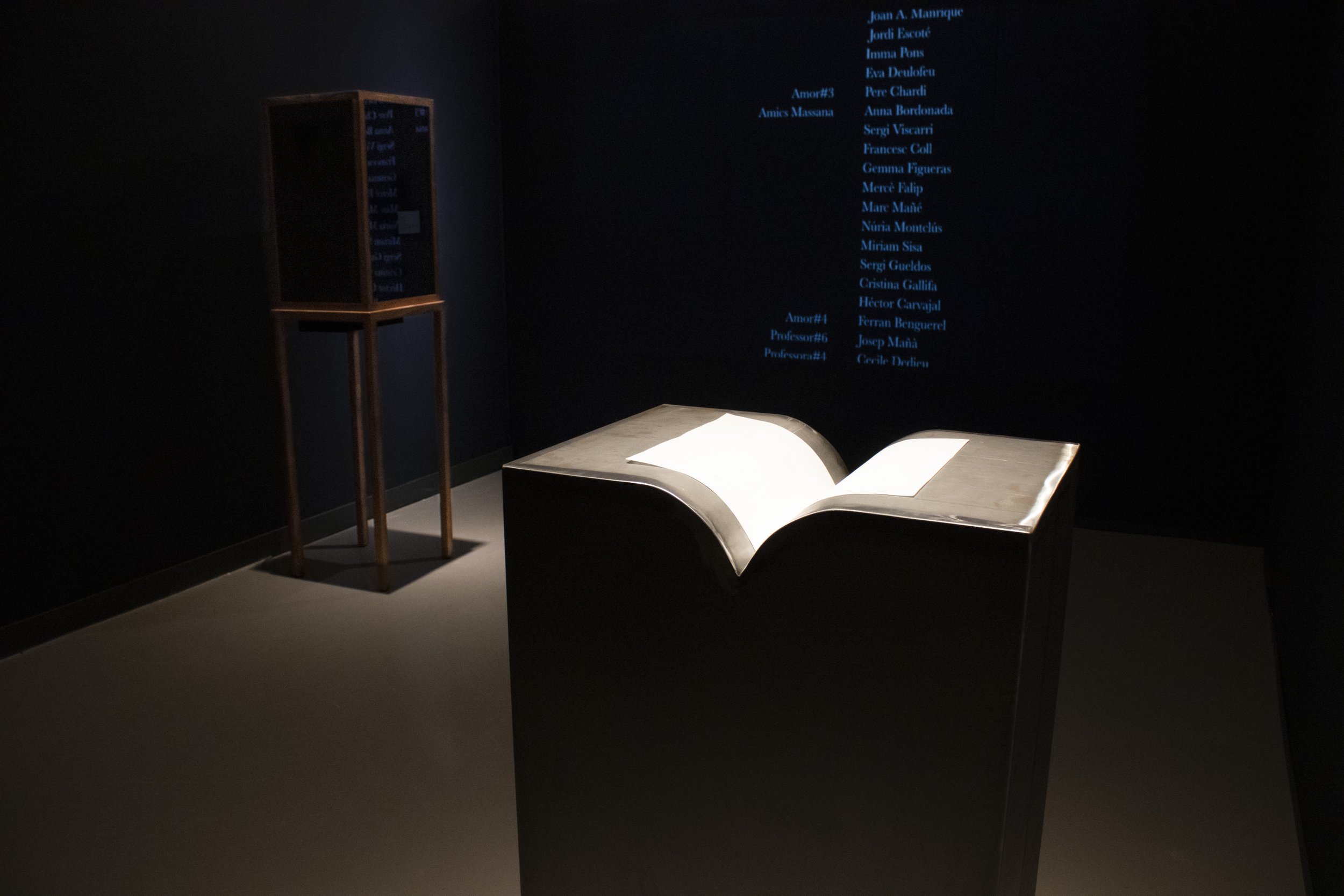
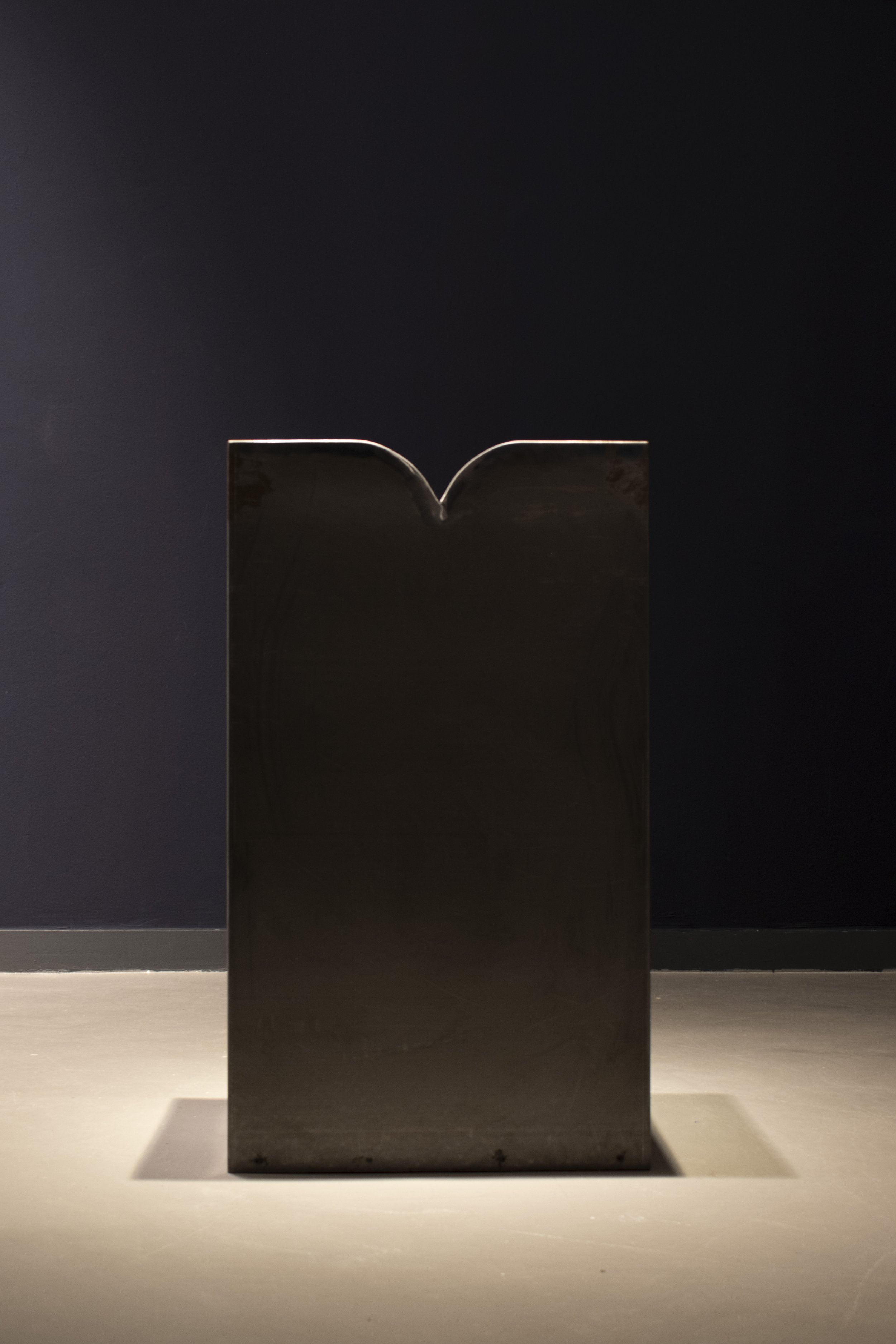




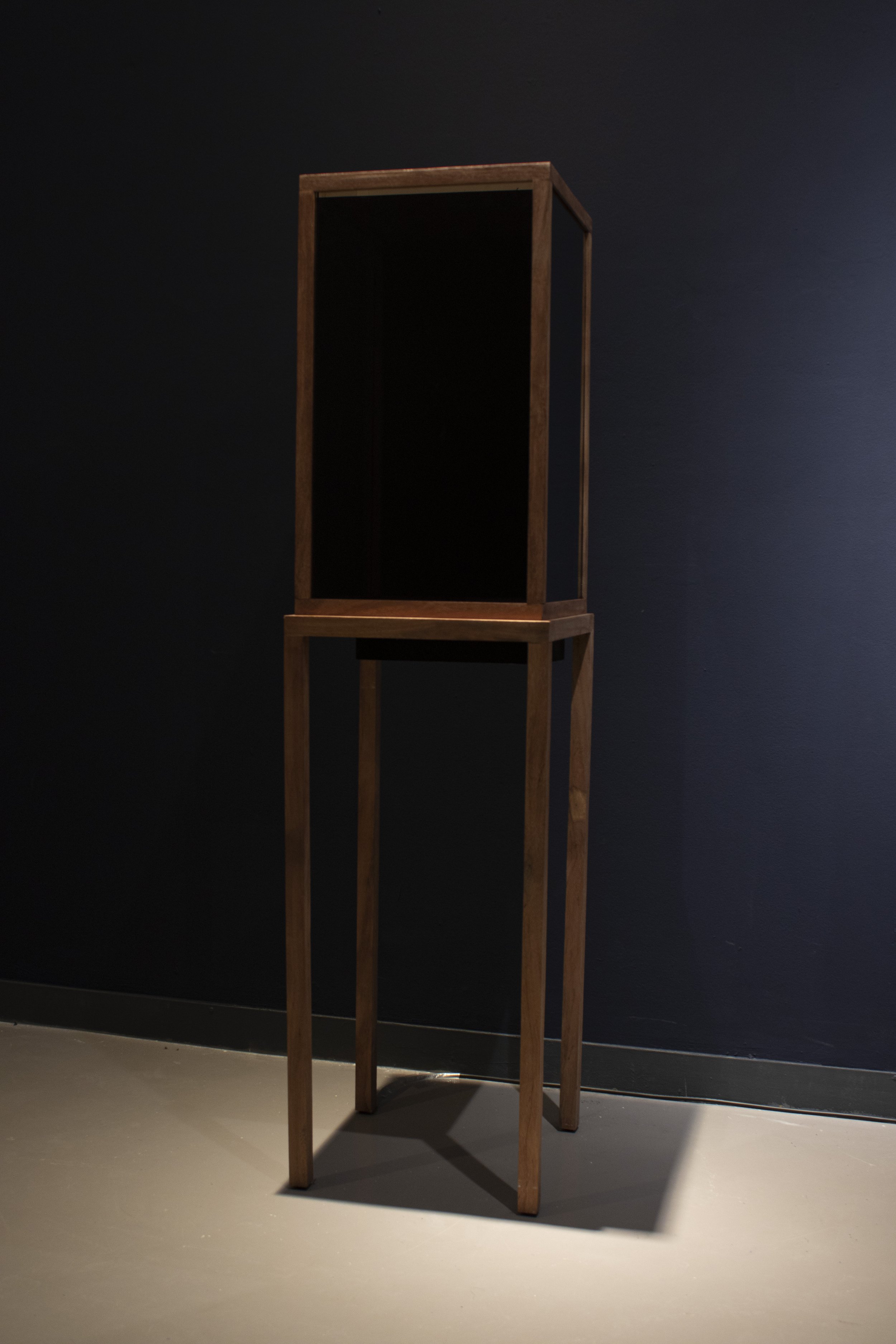


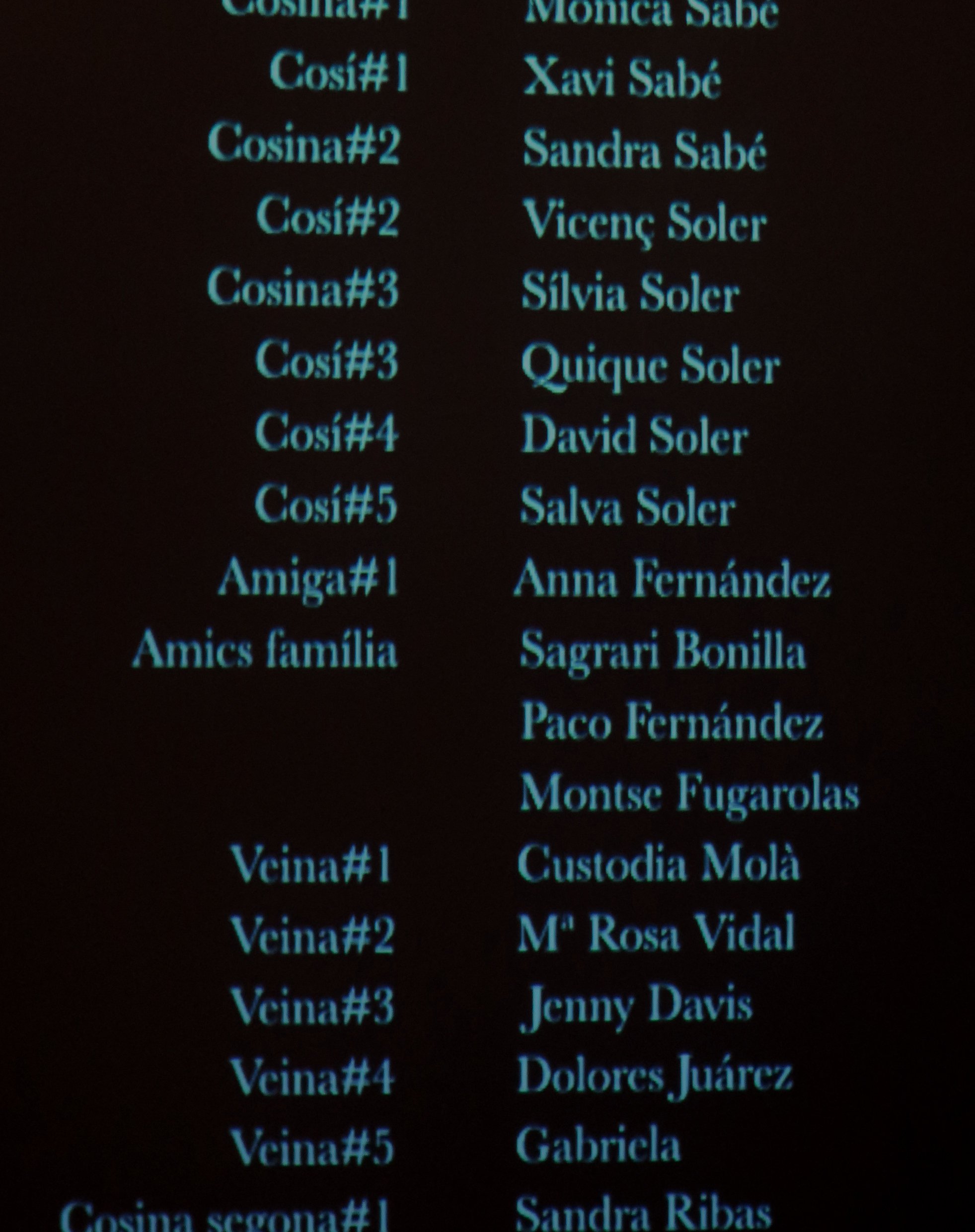
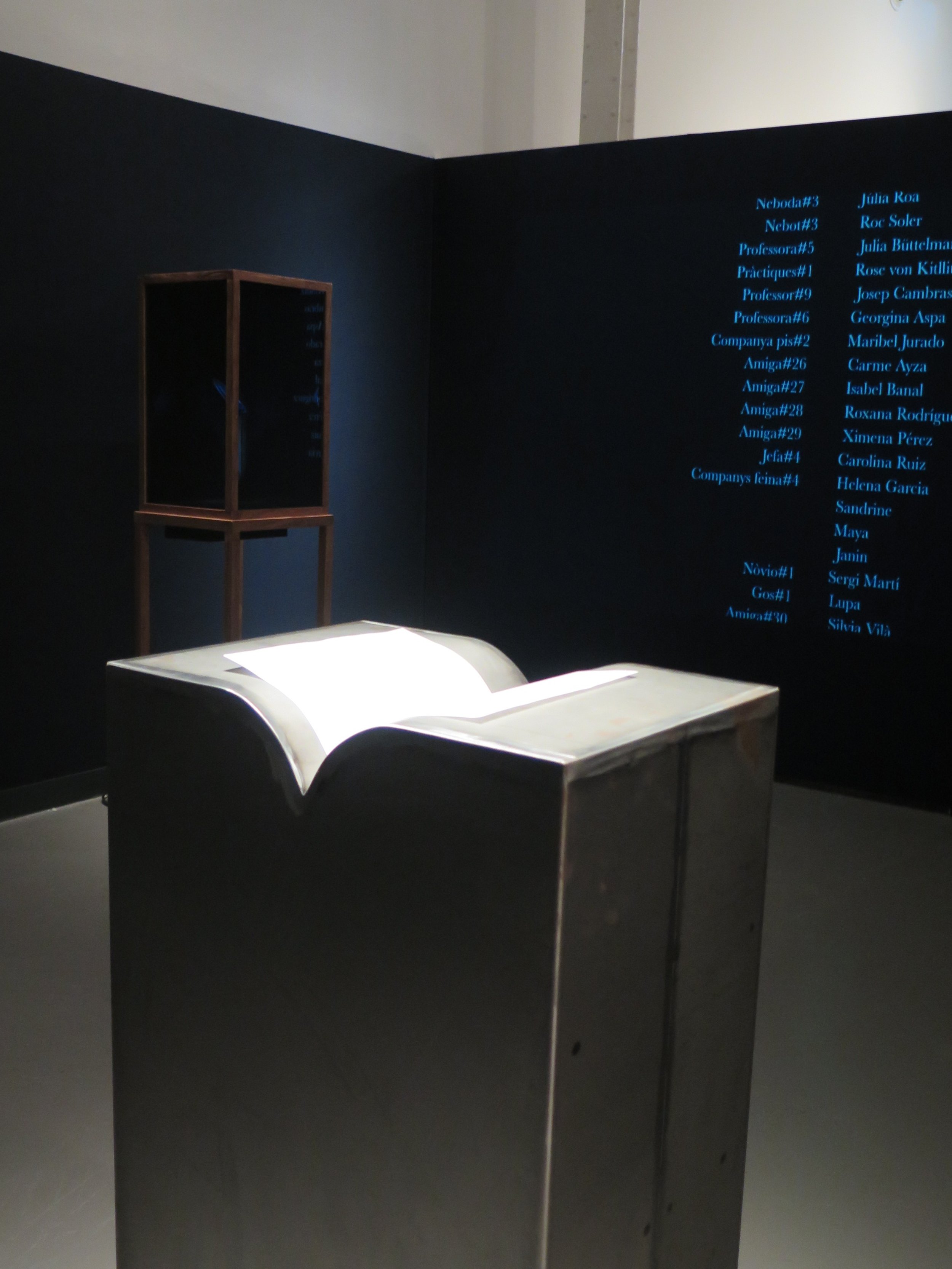
hombre malo
2024
Cabinet made from recycled wood from the storm “Gloria”
Cool.lite Glass
Unpainted iron sculpture
Sign printed on paper
Prompts on paper in manual print
Black and white video, with no sound, 3’ 19’’, loop
“Bad man” deals with a traumatic experience, in a fragmented way, through diverse elements which bring together three pieces. The first, an iron stand which supports a single leaf of paper where we can read two theatre prompts between which there is a big gap of many omitted pages. This is the equivalent to the years separating the actions described.
The second, a cabinet containing an object, with a sign describing it.
And the third, cinema titles projected on loop, where the names of the people who have had an important role in the artist’s life, appear. These are referred to according to their role, for example mother, father, friend, partner, teacher, gallery owner, commissioner or the bad man.
All of these elements, museum designed and subtexted, are used to highlight a work of art or an object within a framework that connects the work to reality.
These kinds of text and objects have an hybrid nature, they take part indirectly as a fictional character in the work and at the same time they have a role in reality.
The artist is using these three elements to bring out an abusive experience from a long time ago, hidden during years as a secret burden. The only way to attempt to construct this experience is through feelings and diffuse memories. There is no evidence nor documentation. The central point, the door handle of the car in which these events happened is the only living, tangible element. Here we see the symbol, the only remainder of all this.
The artist exhibits this inside the wooden cabinet which previously had been badly damaged in the Gloria storm. This cabinet, now restored and turned into a lovely object, stands upright giving the sensation of survival.
The object is only visible during some periods, when the cabinet is exposed to the light. This pattern of light and dark, provokes emotions through the trauma and the pain related to certain memories.
2024
Vitrina de madera reciclada del temporal Glòria
Cristal cool-lite
Escultura de hierro sin pintar
Cartela impresa sobre papel y cartón pluma
Didascàlia sobre soporte de papel con tipografia manual
Vídeo en blanco y negro, sin sonido, 3’19’’, en loop
Hombre malo relata de manera fragmentaria una experiencia traumática a partir de elementos diversos que configuran tres piezas diferenciadas: una peana de hierro que sostiene una sola hoja de papel donde leemos dos didascálias teatrales entre las cuales hay la distancia de un gran número de páginas omitidas, equivalentes a los años que separan las acciones que están descritas; una vitrina que contiene un objeto, acompañada de una cartela que lo describe; y unos créditos cinematográficos proyectados en loop, donde van apareciendo los nombres de las personas que han tenido un papel relevante en la vida del artista, referenciadas según su rol (ya sea lo de madre, padre, amigo, amiga, novio, profesor, galerista, comisaria o hombre malo).
Todos son, pues, elementos paratextuales y museográficos, que en sus diferentes ámbitos de actividad sirven para inscribir una obra artística o un artefacto en un marco de referencia que lo conecta con la realidad: las cartelas museográficas contextualizan las obras de arte o los objetos y ofrecen una descripción técnica, mientras que las vitrinas y peanas los presentan y los resguardan dentro del espacio expositivo; las didascálias son descripciones de las acciones y movimientos que hacen los personajes, dirigidas a las personas reales que los interpretan; y los créditos cinematográficos establecen una correspondencia entre los personajes de ficción y los actores y las actrices, o bien entre las diferentes tareas y aspectos que conforman la obra cinematográfica y los profesionales responsables de cada una. Estas tipologías de texto y de objetos tienen una naturaleza híbrida, participan indirectamente del carácter ficcional de la obra o el artefacto, y a la vez hacen evidente su conexión con la esfera del que es real.
El artista los usa para abordar una experiencia de abuso lejana en el tiempo, escondida durante años como un secreto pesado, y que solo puede intentar reconstruir a partir de sensaciones y de recuerdos difusos, porque no hay evidencias ni documentos. El elemento central de la narración, la manecita de la puerta de un coche dentro del cual habrían sucedido los hechos evocados, constituye el único referente tangible de aquello vivido, y acontece símbolo, reliquia, el residuo de un todo. Soler lo presenta dentro de una vitrina hecha con una madera que antes había sido un suelo fuertemente malogrado por el temporal Glòria, y que ahora, restaurada y convertida en un objeto bonito, que se sostiene verticalment por sí mismo, remite a la idea de supervivencia.
El objeto, pero, es visible solo durante unos intervalos de tiempos de duración cambiante, cuando la vitrina donde se expone es iluminada. Esta cadencia de luz y oscuridad remite a las emociones que nos provocan ciertos recuerdos, al trauma y al dolor de algunas memorias.
texto: Alexandra Laudo
fotos: Jessica Crespo
